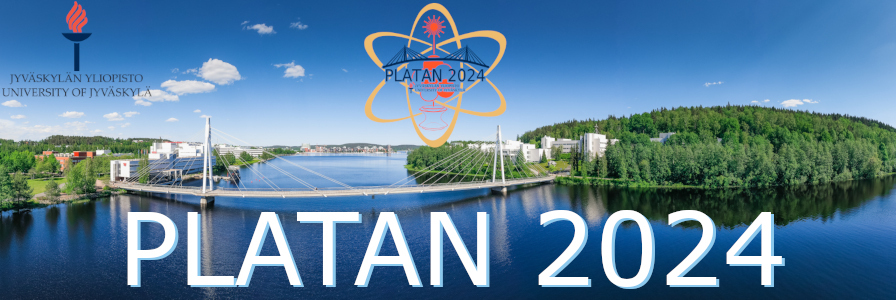Speaker
Description
The thorium isotope $^{229}$Th has attracted a lot of interest over the past few decades. This is related to its extremely low-lying first excited state at $\sim$ 8 eV and long radiative lifetime of a few $10^{3} \, \mathrm{s}$ [1]. This makes $^{229}$Th an ideal candidate for a nuclear clock with outstanding properties promising a variety of applications [2].
Large band gap crystals such as CaF$_2$ or LiCaAlF$_6$ (LiCAF) hosting $^{229}$Th have been proposed for the operation of a solid-state nuclear clock.
Among others, these crystals are transparent at the wavelength of the clock transition and a large number of nuclei can be interrogated at the same time [3]. However, DFT simulations of such environments indicate that doping of $^{229}$Th leads to the formation of localized electronic states in the band gap, so-called defect states [4]. These states can be used for effective nuclear excitation via the Electronic Bridge mechanism, as we could show in the case of Th-doped CaF$_2$ crystals [4,5].
Here, we investigate theoretically different laser-assisted Electronic Bridge schemes for $^{229}$Th doped LiCAF crystals and present the corresponding excitation rates. Similar to CaF$_2$ crystals, these schemes can provide, depending on the energetic position of the defect states, orders of magnitude stronger nuclear excitation$/$deexcitation compared to direct photoexcitation with current laser technology. The results are discussed in conjuncture with the design of a solid-state nuclear clock.
[1] S. Kraemer et al., Nature 617, 706-710 (2023).
[2] E. Peik et al., Quantum Sci. Technol. 6, 034002 (2021).
[3] G. A. Kazakov et al., New J. Phys. 14, 083019 (2012).
[4] B. S. Nickerson et al., Phys. Rev. Lett. 125, 032501 (2020).
[5] B. S. Nickerson et al., Phys. Rev. A 103, 053120 (2021).

